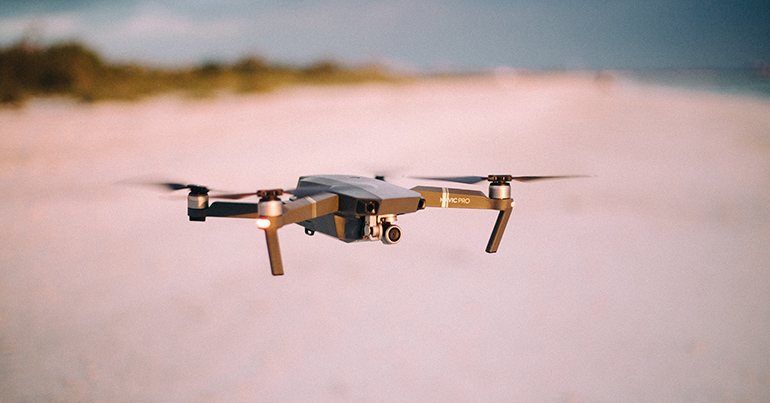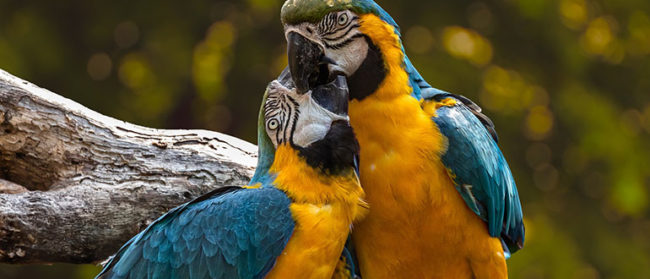
When Aniwaa first started up back in 2013, the company’s small Phnom Penh office was filled with the near-constant whirring of 3D printers and scanners, mechanical arms spinning out test models throughout the day. Office shelves were filled with the products of the printers’ labour: dozens of miniature Eiffel Towers – a symbol of the Aniwaa founders’ homeland – stood beside comic book characters and animated animals, each rendered in bright blue filament.
In 2017, the pocket-sized Aniwaa team – consisting of three members in Cambodia and a fourth, remote member based in France – began expanding its services by testing out virtual and augmented reality goggles. Now, barely eight months after the launch of Aniwaa’s comparative platform for AR and VR gadgetry in mid-2018, the team has moved into reviewing a new field of tech: drones.
Where before there were the sounds of 3D printers, the office now thrums with the hum of whizzing propellers as the team conducts drone flights in-house – flights which have, at least once or twice, managed to break a few hanging light bulbs and leave the office in disarray.
“The first flights were not so smooth,” explained co-founder and CEO Martin Lansard. While miniature drones may zoom through the office semi-daily, not all test drones can be flown indoors: the new platform runs the gamut, testing everything from cheap hobby drones to advanced professional unmanned aerial vehicles (UAVs).
The site launched on 12 February, and while it is currently home to 89 drones, each of which has been tested by the team, Aniwaa aims to compile a database of at least 500 to provide a more comprehensive view of purchasable units for professionals and enthusiasts alike – similar to its 3D printing platform, which is home to over 1,400 rated and reviewed products.
“Our goal is to cover the entire spectrum of drones on the market, from hobby to professional, including niche sub-categories such as underwater drones, smart drones and more,” said Lansard.

Manufacturers typically send units to Aniwaa for a limited time, allowing the team to test out the drones without fronting the costs for each – and the job can definitely be a fun one, Lansard added. He and the team are looking forward to testing more smart drones with features such as “follow me” flight modes designed to track people while they walk – or chase them as they run away.
The dozens of reviewed drones currently on the Aniwaa platform come from 11 different companies and range in both price and power, from $34 nanos all the way up to $45,000 professional drones. Platform users can narrow their options based on price, speed, range and flight time, and three drones can be juxtaposed at any one time via the platform’s comparison tool, which sets more than 50 features side-by-side for quick contrast.
It’s all for a good cause, Lansard says: informing laymen on the best drones to buy in preparation for what he believes will be a wave of drone use by hobbyists and professionals alike.
“There are hundreds of drones available on the market, covering a wide range of prices and applications. It’s difficult for a non-expert person to navigate this market and quickly understand which products could be a good fit for their needs and budget,” explained Lansard. “We built our drones comparison engine to solve this issue and help people identify which drones would be the best for them.”
The Aniwaa platform may be launching at the perfect time, with demand for drones taking off across the globe. Last year, the market for smart commercial drones – drones with computers installed, which are typically used for agriculture, government or entertainment applications – capped out at about $1.4 billion, according to a report released by global analytics company QY Research. The worldwide market is expected to expand exponentially over the next few years, to reach $17.96 billion by the end of 2025.
Southeast Asia has been slightly slower to the drone game, but the market is growing all the same, Lansard said.
“The drone industry and community is thriving in Asia in general, and we believe the adoption of drone technologies will accelerate in Southeast Asia as it will in other parts of the world,” Lansard explained. “In Cambodia, where we’re based, there are already plenty of professional applications for drones, mostly in video and photography or in sectors such as real estate or entertainment.”
Across the board, most countries in Southeast Asia are showing at least some signs of drone adoption for commercial purposes. Singapore has risen above the rest, with private companies employing drones for inspecting buildings, fighting crime, and – potentially, eventually – delivering parcels.

Drones were first used for delivery purposes in Indonesia as recently as last month, when Chinese e-commerce giant JD.com sent its drones to deliver supplies to Indonesian schools on 8 January. It was the first government-sanctioned pilot test for drone delivery in the country – and potentially the first drone delivery pilot in the region.
This hasn’t been the only recent sign that Indonesia is opening up to the idea of commercial drone use: Indonesian-based company AeroGeosurvey, a drone service company in the country, also announced earlier this month that it had joined with Japan-based Terra Drone Corporation to begin rolling out new drone services and solutions within the country and across the region.
In the Philippines, the entrepreneurial spirit has invigorated at least one drone enthusiast – inventor Kyxz Mendiola – to create his own flying vehicle, large enough for passenger transport and with the ability to fly up to six metres high. Following the drone’s first successful flight in September of last year, Mendiola has partnered with an Australian-based company to mass-produce his “flying sports car” for potential use in overcrowded cities.
More broadly, drones have been in use in the Philippines since 2015, when the local Department of Agriculture coordinated with the United Nations’ Food and Agriculture Organisation to use the drones as aerial mapping tools in pre- and post-disaster assessments. With a small trio of drones currently in use, the DA anticipates expanding its fleet, eventually using these drones to assess farmers’ crops and change the way seeds are planted, fertilisers are used and crops are monitored.
Similar drone applications in the agriculture sector are likely to take off across the region, Lansard said.
“My personal bet is that smart drones will be increasingly used in agriculture across Southeast Asia, to help farmers increase the yield of their crops by monitoring them, for example,” he explained. “I also think surveillance drones will be increasingly used to monitor public events, using artificial intelligence capacities to identify people on crowds and that sort of thing.”
Mendiola may not be far from the money with his “flying sports car”, either – Lansard expects that, soon enough, these types of drone applications will begin popping up around the region and the world.
“We should definitely see the rise of passenger-carrying drones, the so called ‘self-flying taxis’ or ‘air taxis’,” Lansard explained. “While those may seem straight out of a sci-fi movie, this may happen sooner than you think.”


